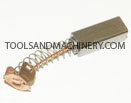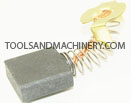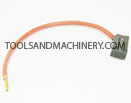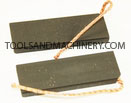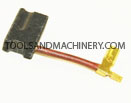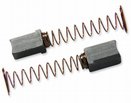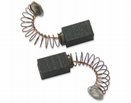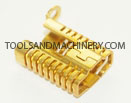Green Power Tool Tips:
How to Replace the Brushes in Your Power Tool
Maintaining a greener lifestyle is becoming more than just a trend these days and we craftsmen can do our part as well. The Earth is, essentially, what keeps us in business, what keeps birch, cherry, maple and mahogany in our woodshops, what keeps beauty in our projects, and food on our tables; we might consider this fact a little more closely the next time our tools run slow or stall in action — you see, most minor tool repairs are pretty simple and most craftsmen can manage these repairs fairly easily. Additionally, repairs are significantly cheaper than replacements, and they’re kinder to the environment as well.
Imagine all the power tools on the planet that get tossed aside every day. Now imagine that each one of those power tool’s requires some kind of expensive replacement for its user, which, in turn, will also be tossed aside when its time comes. Everyone of those tools is now also emitting toxic pollutants into our atmosphere. This is not the most exciting scenario, in fact, its really quite depressing – so save yourself a few dollars and save the environment from another addition to the landfill problem by repairing your power tools instead of buying new ones.
One of the simplest and certainly most common power tool repairs comes in the form of brush replacements.
The carbon brushes in your power tools are the things that transfer electric current and working energy from the tool’s motor to the rest of the tool’s working parts. Because there is so much happening inside your tool and the brushes are the bridge that make it all possible, it is no surprise that they will eventually wear down, they get trampled on, and in time they can no longer move that electrical current from one component to the other with and degree of real effectiveness.
NOTE: Although they all do the same thing, there ere are many different types of brush in the power tool community; the above images are a few examples of what you might find in your power tool.
So it’s true then, that there comes a time in the life of every power tool that its carbon brushes need replacing. It’s an inevitability. No matter how hard you try to avoid the change, wear and tear will catch up with you, your tool will get sluggish or completely fail, and you’ll know its time to take on that brush replacement. The procedure, however, isn’t as frightening as all that; in fact, its relatively simple; certainly easier, in my opinion, than buying an entirely new tool. So now, let me provide a bit of direction, and you, my friend, will be a drill-brush doctor in no time.
To begin, you always want to be sure of three things: one, if you have the tool’s manual check for specific brush replacement instructions, this will ensure a smoother process. Two, be certain you have the exact brushes that were designed for your power tool – not all brushes are universal, and they are always specific to their tool’s motor. And three, be sure the tool is disengaged – unplug your corded tools and remove the battery from cordless tools to be safe.
Examples of Carbon Brushes Examples of a Brush Guide and Brush Holder
Now, locate the brushes on the tool’s motor, they are usually about one inch long rectangular carbon blocks with a coil-spring tail (the spring is used to apply force on the carbon block which ensures the brush remains engaged with the motor as the carbon wears-down). The brushes slide into guide sleeves which keep them in position on opposite sides of the motor. Sometimes the brushes are a little difficult to find, but most newer models offer externally accessible brushes to ensure you don’t have to crack to deeply into the motor. Its important here to keep in mind that whatever you remove or take apart, you also to have to replace and put back together – focus to ensure you can properly reassemble the tool. Once you find the brushes, carefully remove the brush caps, slide the old brushes out of the brush guide or brush holder, and slide the new ones in in the same position as they were removed. As you do this, ensure the brush is making contact with the commutator of the armature.
Lastly, put everything back together tightly and precisely making sure everything is in its right place. Before you’re entirely finished though, you should engage the tool to ensure all is is working order. If the tool is still malfunctioning in some way or emits a smell, you may have a bigger problem than a brush replacement can fix – in this case take the tool to an authorized power tool service center for a more thorough, professional inspection.
In the end, a brush replacement is nearly as easy as pie and certainly more rewarding; it helps you keep your wallet full and allows you give a little goodness back to good-old Mother Earth. Its a win win situation, no question about it.


